Keung-Chi Ng
A Sensitivity Analysis of Pathfinder
Mar 27, 2013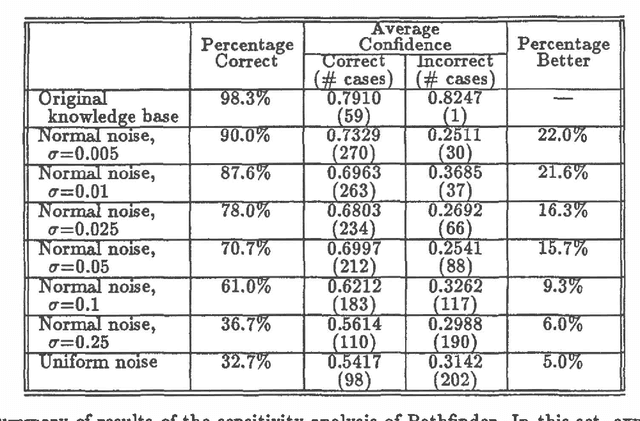
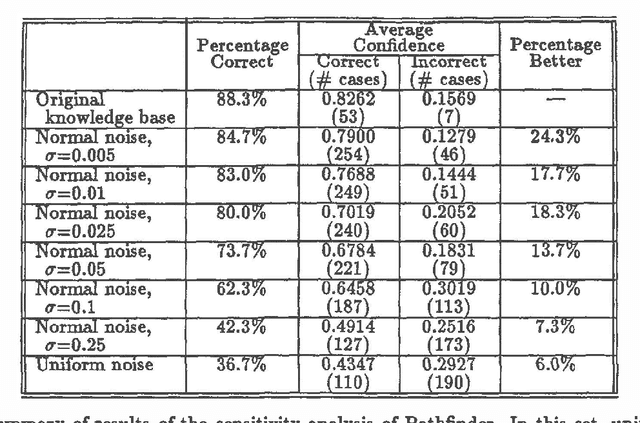
Abstract:Knowledge elicitation is one of the major bottlenecks in expert system design. Systems based on Bayes nets require two types of information--network structure and parameters (or probabilities). Both must be elicited from the domain expert. In general, parameters have greater opacity than structure, and more time is spent in their refinement than in any other phase of elicitation. Thus, it is important to determine the point of diminishing returns, beyond which further refinements will promise little (if any) improvement. Sensitivity analyses address precisely this issue--the sensitivity of a model to the precision of its parameters. In this paper, we report the results of a sensitivity analysis of Pathfinder, a Bayes net based system for diagnosing pathologies of the lymph system. This analysis is intended to shed some light on the relative importance of structure and parameters to system performance, as well as the sensitivity of a system based on a Bayes net to noise in its assessed parameters.
A Sensitivity Analysis of Pathfinder: A Follow-up Study
Mar 20, 2013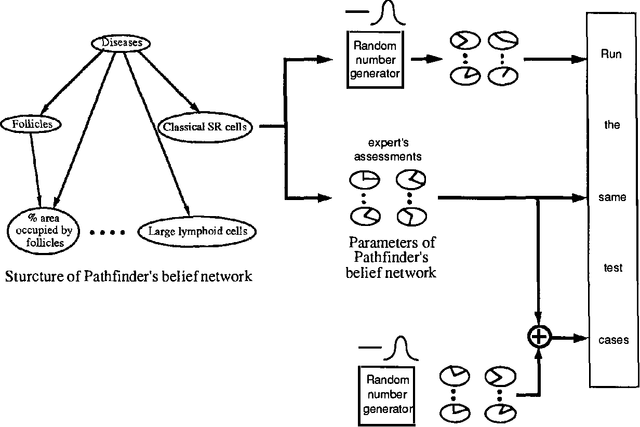
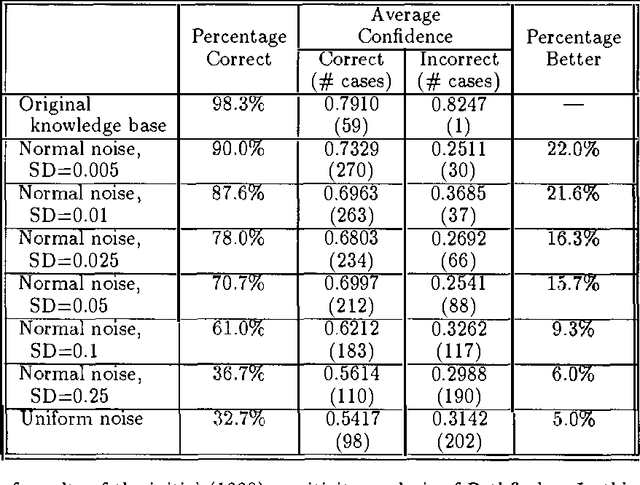
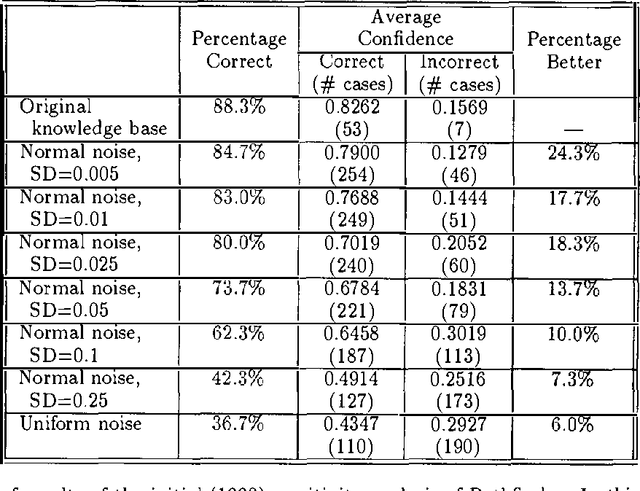
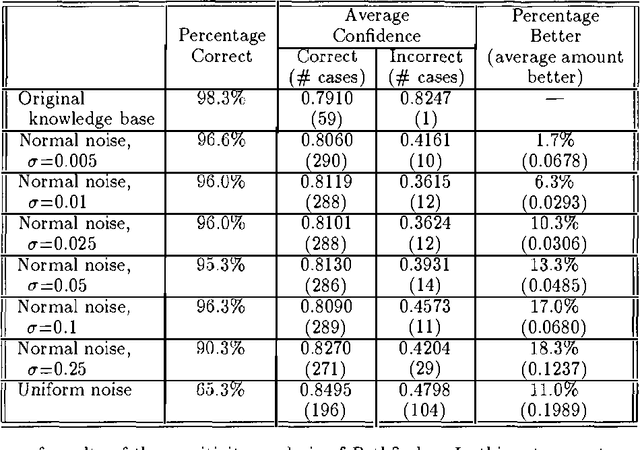
Abstract:At last year?s Uncertainty in AI Conference, we reported the results of a sensitivity analysis study of Pathfinder. Our findings were quite unexpected-slight variations to Pathfinder?s parameters appeared to lead to substantial degradations in system performance. A careful look at our first analysis, together with the valuable feedback provided by the participants of last year?s conference, led us to conduct a follow-up study. Our follow-up differs from our initial study in two ways: (i) the probabilities 0.0 and 1.0 remained unchanged, and (ii) the variations to the probabilities that are close to both ends (0.0 or 1.0) were less than the ones close to the middle (0.5). The results of the follow-up study look more reasonable-slight variations to Pathfinder?s parameters now have little effect on its performance. Taken together, these two sets of results suggest a viable extension of a common decision analytic sensitivity analysis to the larger, more complex settings generally encountered in artificial intelligence.
Incremental Dynamic Construction of Layered Polytree Networks
Feb 27, 2013



Abstract:Certain classes of problems, including perceptual data understanding, robotics, discovery, and learning, can be represented as incremental, dynamically constructed belief networks. These automatically constructed networks can be dynamically extended and modified as evidence of new individuals becomes available. The main result of this paper is the incremental extension of the singly connected polytree network in such a way that the network retains its singly connected polytree structure after the changes. The algorithm is deterministic and is guaranteed to have a complexity of single node addition that is at most of order proportional to the number of nodes (or size) of the network. Additional speed-up can be achieved by maintaining the path information. Despite its incremental and dynamic nature, the algorithm can also be used for probabilistic inference in belief networks in a fashion similar to other exact inference algorithms.
 Add to Chrome
Add to Chrome Add to Firefox
Add to Firefox Add to Edge
Add to Edge